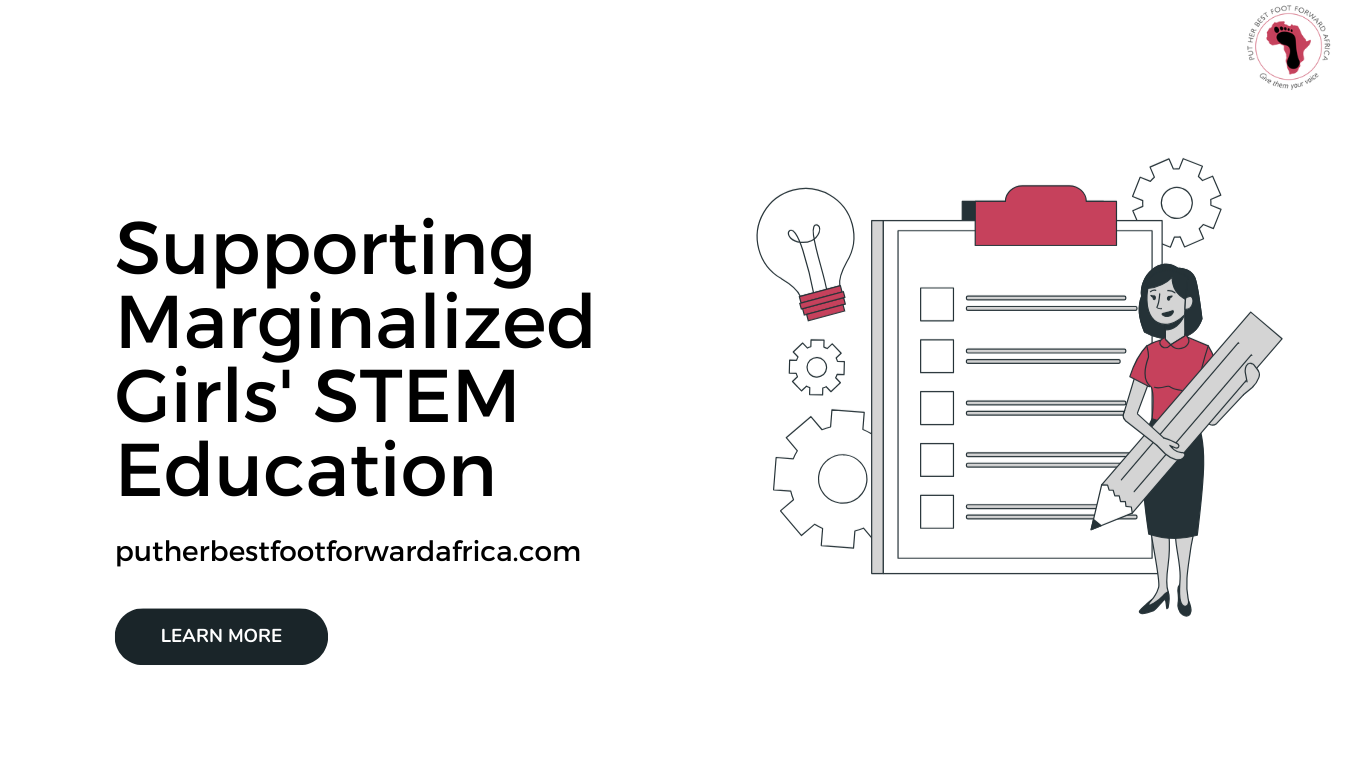Introduction
In the pursuit of gender equality and inclusive education, it is essential to address the barriers that marginalized girls face in accessing quality education.
In today’s rapidly advancing world, promoting gender equality and inclusive education is paramount. One area that requires significant attention is the access and opportunities for marginalized girls in STEM education.
Science, technology, engineering, and mathematics (STEM) are fields that have traditionally been dominated by males.
Despite significant progress in closing gender gaps in education and labor force participation, persistent gender differences within these domains continue to hinder women’s advancement. Women still face challenges such as lower income levels, a higher likelihood of working in lower-paying occupations and sectors compared to men, and underrepresentation in STEM fields.
Even with more women graduating from university, they remain a minority in the STEM fields.
However, by breaking down these barriers and empowering marginalized girls in STEM, we can enhance their career prospects, improve their overall well-being, and foster a more inclusive and innovative society.
What are the Limiting Factors for STEM Education for Marginalized Girls
In spite of the importance and potential benefits of promoting STEM education for marginalized girls, several limiting factors persist, hindering their access and participation in these fields. Understanding and addressing these factors are crucial steps toward creating a more inclusive and equitable STEM education environment.
Some common limiting factors include:
Gender Stereotypes and Bias
In Kenya, gender stereotypes and biases perpetuate the underrepresentation of girls in STEM education. Deep-rooted societal beliefs portray STEM fields as more suitable for males, which discourages girls from pursuing these subjects. Cultural expectations and gender norms often steer girls towards traditional gender roles, emphasizing domestic or humanities-focused careers.
According to the Kenya National Bureau of Statistics (KNBS), girls’ enrollment in STEM subjects such as physics, chemistry, and mathematics remains significantly lower than boys’ enrollment.
For example, the KNBS Education and Gender Report indicated that in 2019, boys accounted for 58.4% of physics enrollments, while girls represented only 41.6%.
Loss of Interest in STEM Education
The loss of interest or lack of interest in STEM over time among marginalized girls hampers their engagement in STEM education.
Societal stereotypes and biases, which portray STEM as more suitable for males, reinforce the notion that girls are not naturally inclined or capable in these areas. This cultural conditioning can lead marginalized girls to internalize these beliefs, resulting in a loss of interest in STEM subjects.
Moreover, the limited exposure and awareness about STEM fields and their potential career opportunities lead to disengagement and a diminished desire to pursue further studies in STEM
Lack of Role Models and Mentors
Limited visibility of women, especially those from marginalized backgrounds, in STEM careers hinders the availability of relatable role models and mentors who can guide and support girls throughout their STEM education journey.
According to the African Development Bank Group, women constitute only 30% of the total workforce in science and technology-related occupations in Kenya.
This underrepresentation of women in STEM careers implies a limited number of visible female role models for marginalized girls aspiring to pursue STEM fields.
Limited Access to Resources and Opportunities
Economic challenges faced by marginalized communities contribute to disparities in accessing quality STEM education resources and infrastructure.
According to the Kenya National Bureau of Statistics (KNBS), poverty rates are higher in marginalized areas compared to other regions in the country. Economic constraints make it difficult for marginalized communities to allocate sufficient funds for educational resources, including textbooks, laboratory equipment, and technology required for effective STEM education.
Additionally, schools in marginalized areas often lack adequate infrastructure and facilities for practical experiments and hands-on learning in STEM subjects. A study by the African Journal of Teacher Education (AJOTE) highlighted the limited availability of well-equipped science laboratories in schools in rural and marginalized areas of Kenya.
Lack of Awareness and Support
Many marginalized communities may not be aware of the potential benefits and career opportunities offered by STEM fields, leading to limited encouragement and support for girls’ participation.
Insufficient support systems within families, schools, and communities can undermine girls’ motivation and confidence in pursuing STEM education.
Intersectionality and Multiple Disadvantages
Marginalized girls often face multiple disadvantages due to their gender, socioeconomic status, or disability, which can exacerbate the challenges they encounter in accessing STEM education.
Intersectionality plays a role in compounding discrimination and limiting opportunities for girls from marginalized backgrounds.
Example
In a marginalized community in rural Kenya, a young girl named Kambua faces multiple disadvantages that hinder her access to STEM education. Kambua belongs to an ethnic minority group and comes from a low-income background. Her family struggles to afford basic necessities, let alone invest in quality education resources.
Due to limited financial resources, Kambua’s school lacks well-equipped science laboratories and the technology infrastructure necessary for practical STEM learning. Additionally, the school lacks access to extracurricular activities and enrichment programs that would expose her to real-world applications of STEM.
Moreover, Kambua’s gender intersects with her socioeconomic status, further compounding the challenges she faces. In her community, traditional gender roles and expectations prioritize early marriage and household responsibilities for girls, undermining their opportunities for education and career advancement.
Consequently, Kambua’s limited access to quality resources, inadequate infrastructure, and societal gender norms create barriers to her pursuit of STEM education. The compounding effects of her ethnicity, socioeconomic status, and gender intersectionality limit her exposure to STEM fields, hinder her motivation, and restrict her belief in the possibility of a STEM career.
Strategies to Support Marginalized Girls’ STEM Education and Address Limiting Factors
By breaking down barriers, providing equal access to STEM education, and promoting supportive learning environments, we empower marginalized girls to pursue rewarding careers, contribute to scientific innovation, and drive positive change.
Here are some strategies we can implement:
Creating a Supportive Learning Environment
- Training teachers and educators on gender-responsive teaching methods that promote girls’ active participation and engagement in STEM subjects.
- Establishing safe spaces that are free from gender bias and discrimination, where marginalized girls feel encouraged and supported.
Providing Mentorship and Opportunities
- Offering mentorship programs and scholarships to help marginalized girls overcome financial barriers and gain hands-on experience in STEM fields.
- Arranging internships, apprenticeships, and industry partnerships that expose girls to real-world STEM applications and role models.
Collaborative Initiatives and Outreach Programs
- Building partnerships between educational institutions, government bodies, and non-governmental organizations to expand access to quality STEM education for marginalized girls.
- Establishing STEM centers, organizing workshops, competitions, and science fairs, and providing resources and mentorship support.
- Conducting targeted outreach programs to raise awareness among parents and communities about the importance of girls’ education in STEM.
Challenging Stereotypes and Bias
- Implementing awareness campaigns and educational programs to challenge gender stereotypes and promote inclusive messaging about STEM fields.
- Encouraging representation of diverse female role models in STEM through media, guest speakers, and mentorship programs.
Providing Supportive Networks and Mentorship
- Establishing mentorship programs that connect marginalized girls with successful women in STEM, providing guidance, advice, and inspiration.
- Creating supportive communities and networks that foster a sense of belonging, encouraging girls to persist in their STEM pursuits.
Equal Access to Resources and Opportunities
- Ensuring equitable distribution of resources and investing in STEM infrastructure in marginalized schools and communities.
- Offering scholarships, grants, and funding opportunities to bridge the financial gap and provide access to STEM resources and extracurricular activities.
Cultivating Inclusive Learning Environments
- Implementing inclusive teaching practices that address stereotype threat and foster a supportive and respectful classroom environment.
- Incorporating diverse perspectives and examples in STEM curricula to promote inclusivity and engage marginalized girls.
Parent and Community Engagement
- Conducting awareness campaigns for parents and communities, highlighting the value of STEM education, and addressing misconceptions.
- Encouraging parental involvement and support for girls’ STEM education through workshops, information sessions, and outreach programs.
Scholarships and Financial Support
- Providing scholarships and financial assistance programs to support marginalized girls in accessing quality STEM education resources, including textbooks, laboratory equipment, and technology.
Benefits of Promoting STEM Education for Marginalized Girls
Supporting marginalized girls’ STEM education is crucial for achieving gender equality, fostering inclusive societies, and unleashing untapped potential. Other benefits include:
Expanded Career Prospects
By equipping marginalized girls with STEM skills, we open up a vast range of career opportunities in fields traditionally dominated by males.
Increased participation of marginalized girls in STEM fosters economic independence, challenging gender norms and empowering them to contribute to their communities.
Girls from marginalized backgrounds can pursue careers as scientists, engineers, coders, data analysts, and innovators, bridging the gender gap in these fields.
Enhanced Overall Well-being
Engaging marginalized girls in STEM education nurtures their confidence, problem-solving skills, and growth mindset.
STEM education fosters critical thinking, creativity, and resilience, empowering girls to overcome challenges in their academic and personal lives.
Girls gain self-esteem, develop leadership skills, and cultivate a passion for learning, which positively impacts their overall well-being and future success.
Societal Benefits of Diversity and Inclusion
Increased representation of marginalized girls in STEM fields brings diverse perspectives, experiences, and ideas, leading to more comprehensive problem-solving and innovation.
Inclusive STEM education promotes collaboration, creativity, and interdisciplinary approaches, crucial for addressing complex global challenges.
Marginalized girls’ contributions to STEM research, technology development, and policy-making lead to more inclusive and equitable solutions with broader societal impact.
Conclusion
By actively addressing these limiting factors, we can create an environment where marginalized girls have equal opportunities to access and excel in STEM education. Empowering them to pursue their interests and develop STEM skills not only benefits individual girls but also contributes to a more diverse, innovative, and inclusive society.
Empowering Marginalized Girls in Kenya: Join the Movement, Support STEM Education Today!
To support marginalized girls’ education in Kenya and address the barriers they face in accessing STEM education, it is crucial to rally behind organizations dedicated to creating equal opportunities. Put Her Best Foot Forward Africa strives to empower marginalized girls and break down the barriers they encounter in pursuing education, including STEM.
By donating to Put Her Best Foot Forward Africa, you can make a direct and tangible impact on the lives of marginalized girls in Kenya. Your contribution will help provide essential resources, mentorship programs, and scholarships to support their educational journey. These girls will gain access to quality STEM education, be exposed to role models and mentors, and have the opportunity to realize their full potential in the fields of science, technology, engineering, and mathematics.
Join hands with us and contribute to our mission of empowering marginalized girls in Kenya. Together, we can create a future where all girls, regardless of their background, have equal access to quality education and the opportunity to pursue their dreams in STEM.

